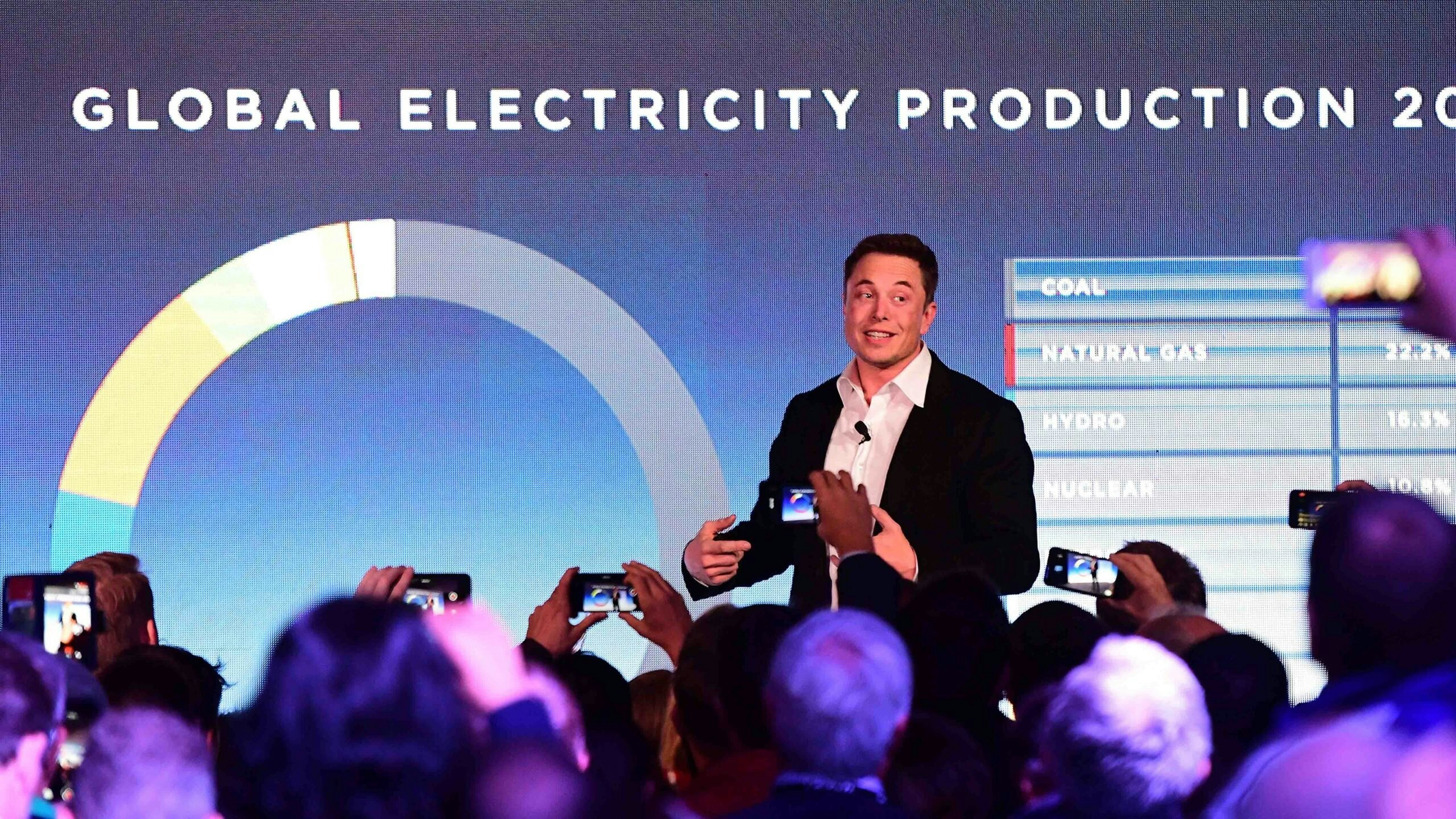Elon Musk has long claimed that the world can be powered entirely with solar panels and batteries.
Wind and solar only work with right weather conditions that can’t be predicted with any accuracy. No source of energy works 100% of the time, but coal, natural gas and nuclear energy work approximately 90% of the time. And a lot of the downtime can be predicted.
Wind and solar energy, on the other hand, can sometimes produce a lot of energy when it’s not needed or no energy when it is. Batteries are proposed as the solution to this problem.
When wind and solar farms are producing a bunch of energy when demand is low, that energy can be stored in batteries for when demand is high and wind and solar farms aren’t producing power.
Really Amazing Cost
In a 2021 tweet, Musk said, “What’s really amazing is that you can store all energy needed to power a continent overnight with 1 square kilometer of stacked Tesla Megapacks!”
Energy expert Alex Epstein calculated what it would cost to provide enough energy to power the globe with batteries. Since there can be entire seasons or weeks of lower-than-usual sunlight to power solar panels, Epstein went with a conservative three days of battery power as the backup needed for this global solar energy supply.
The world currently uses more than 165,000 terawatt hours of electricity annually – that’s 165,000 trillion watt hours every year. For three days of battery storage, the world would need 1.36 billion megawatt hours stored.
Based on the current cost of Tesla Megapacks, the batteries needed for those three days of storage would cost $590 trillion or six times the global gross domestic product, which is a measure of the value of all the goods produced on the planet.
And those batteries need to be replaced every 10 years.

Tiny Amount
Energy and environmental policy expert Steve Goreham ran some calculations on the current amount of battery storage in the U.S.
“There are a lot of headlines on batteries, but the amount of batteries that are on the grid right now is very, very small,” Goreham said.
In 2021, the U.S. used 4.116 gigawatt hours of electricity. This doesn’t include transportation or heavy industry, which is about 80% of the energy we use. The total amount of battery electrical storage on the grid in 2021 was 9 gigawatt hours.
“We’re storing 2 watt hours for every 1 million watt hours in the United States right now,” Goreham said.

Not Going To Happen
To illustrate how costly batteries are, Goreham pointed to a 9,000-megawatt offshore wind energy project being developed by the New York State Energy Research and Development Authority (NYSERDA).
The project includes 3,000 megawatts of battery capacity, and the batteries would back up the wind farm for two to four hours.
The estimated cost of the wind farm is $9 billion, and the battery factory is $7.5 billion. The farm will last about 20 years, and the battery factory will last about 10.
Periods in which there’s no wind can last much longer than a day, but Goreham said to backup the wind farm for a single day would cost around $43 billion. Since the battery factory would last half as long as the farm, a good rule of thumb is you need 10 times the cost of any wind farm to have a single-day backup system.
To transition all electrical generation from fossil fuels to wind and solar, Goreham explained, would require an astronomical expense for the battery storage.
“That basically says this thing isn’t going to happen,” Goreham said.
Other Technologies
Batteries aren’t the only type of storage. Pumped storage uses gravity to store energy. When wind and solar farms are producing power when demand is low, the electricity is used to drive pumps to store water in elevated bodies.
Then, when demand is high and power production low, the water is drained to spin turbines, just like a dam does with the downward flow of water on a river.
Goreham said pumped storage works pretty well and it’s much cheaper than batteries, but it requires a lot of land and water.
There also are other storage technologies, but 100% renewable energy targets aren’t waiting for them to be fully developed, which could take decades.
The West
PacifiCorp serves 2 million energy customers throughout the U.S. West. It’s the parent company of Rocky Mountain Power, which serves customers in Utah, Idaho and Wyoming.
Public utilities like PacifiCorp file Integrated Resource Plans (IRP) with state public service commissions. These identify the preferred mix of resources that will meet projected demand, maintain grid reliability and provide resource diversity, at the least possible costs.
PacifiCorp’s 2021 Integrated Resource Plan includes 700 megawatts of battery storage by 2024, and by 2040, the company plans to have 4,781 megawatts of various storage types, including batteries and pumped storage.
The West contains about 25% of the total U.S. population, which means the people of the West consume roughly 1,029 gigawatts of electricity annually. So, if PacifiCorp builds all the storage planned in its 2021 IRP, it will have enough power to serve its customers for 1.68 days by 2040.
It should be noted that the plan doesn’t call for 100% wind and solar, so it won’t have to depend solely on storage during extended periods of wind and solar outages.
Green Breakdown
Goreham’s fourth book, “Green Breakdown: The Coming Renewable Energy Failure,” which is expected to be out this summer, predicts that as the United States pursues a full energy transition to renewable energy, the grid is simply going to collapse.
The book, Goreham said, examines all the efforts to promote renewable energy, what will happen to the grid with increasing amounts of intermittent wind and solar when the demands on it increase with more electric cars and electrified kitchen appliances. It looks at what’s happening in Europe, which is much further along in its transition and experiencing a serious energy crisis that’s shutting down industries across the continent.
Goreham said the U.S. will end up with a lot of the same problems as it pursues this path.
“We’re gonna wind up with blackouts, rising electricity prices, and a lot of other problems. I think people are gonna step back from this drive to get rid of greenhouse gasses in everything that we do. Net zero is going to become a hated term,” Goreham said.





